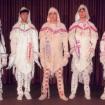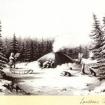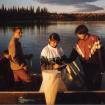Gwi'eekajìlchit OR Tithegeh Chì’
This place name refers to a prominent cliff on the eastern side of Campbell Lake, in the Gwich’in Territorial Park outside of Inuvik. The cliff is visible from the Dempster Highway and, if you stand on top, it provides a spectacular view of the Mackenzie Delta. The first name refers to a time long time ago when people climbed this cliff to collect eagle feathers to fletch the ends of their arrows. The second name refers to the seagulls that used to nest along this cliff. There were so many that this cliff was described as being "white" with large seagulls.




